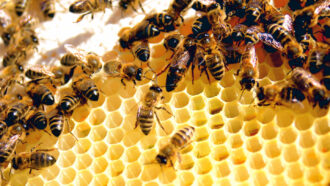average: (in science) A term for the arithmetic mean, which is the sum of a group of numbers that is then divided by the size of the group.
data: Facts and/or statistics collected together for analysis but not necessarily organized in a way that gives them meaning. For digital information (the type stored by computers), those data typically are numbers stored in a binary code, portrayed as strings of zeros and ones.
hypothesis: (v. hypothesize) A proposed explanation for a phenomenon. In science, a hypothesis is an idea that must be rigorously tested before it is accepted or rejected.
mean: One of several measures of the “average size” of a data set. Most commonly used is the arithmetic mean, obtained by adding the data and dividing by the number of data points.
outlier: (in statistics) An observation that lies outside the range of the rest of the data.
outliers: Events or cases that fall outside some normal range. That makes them unusual and may make them seem unlikely or suspicious.
point: (in mathematics) A precise point in space that is so small that it has no size. It merely has an address.
range: The full extent or distribution of something. For instance, a plant or animal’s range is the area over which it naturally exists. (in math or for measurements) The extent to which variation in values is possible. Also, the distance within which something can be reached or perceived.









